#Henri Guisan
Text







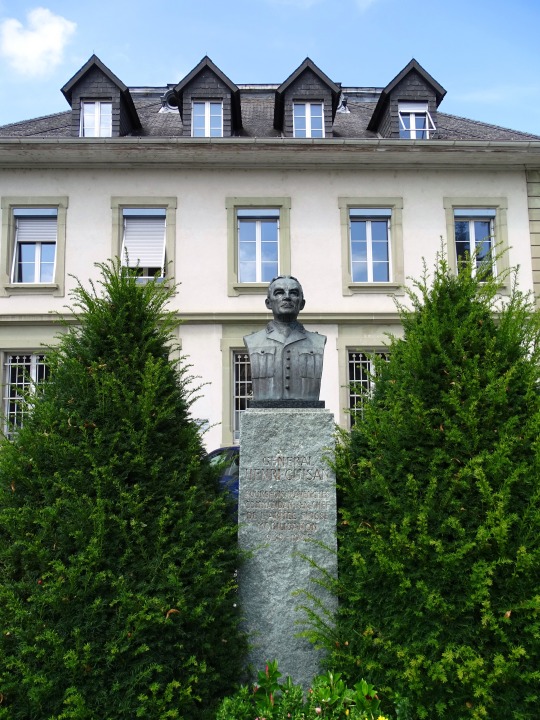
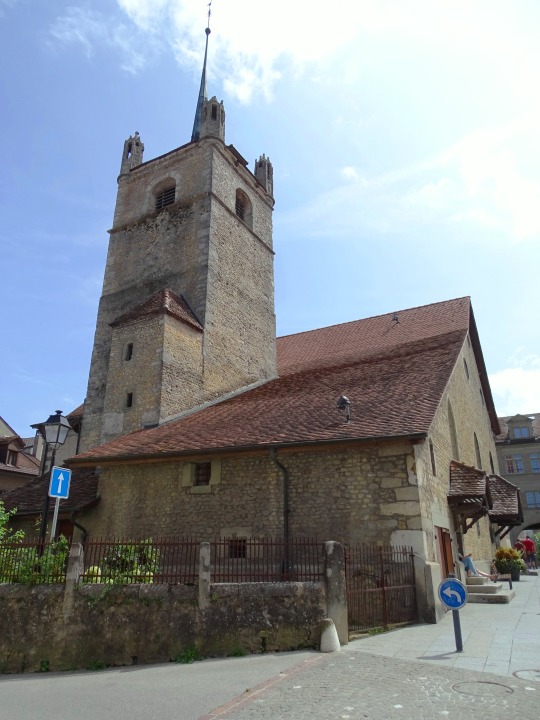

Avenches, Switzerland (No. 1)
Avenches is a Swiss municipality in the canton of Vaud, located in the district of Broye-Vully.
The roots of Avenches go back to the Celts. A tribe of Helvetians had built a settlement on the hills of Bois de Châtel, south of the later Roman settlement. Nearby the Helvetii seem to have had their capital on Mont Vully as shown in recent archaeological excavation. The canal-La Broye-which joins Lac Morat to Lac Neuchâtel is thought to be Roman in origin.
The establishment of the Roman settlement of Aventicum, which became the capital of the province, took place around 15-13 B.C. The name comes from the Helvetian spring goddess Aventia. After patronage by the emperor Vespasian, Aventicum soon developed into a blooming commercial center with over 20,000 inhabitants. The town was granted colonia status-a retirement location for legionaries- although the built up area of the town occupied only a fraction of the walled area -the walls are some 5.6 kilometers in length. The walls were clearly a statement of status rather than being a practical defensive system. Excavations have revealed the detail of the theatre and major temple complex dedicated to the "genius" of Helvetia-Roman Switzerland. One column of the temple stands as the "cigognier"- formerly a nesting site for storks. Other parts of the city still visible are the amphitheatre which includes a later tower now housing the Professor Hans Bogli museum, the baths, the walls, two of the entrances gates, a smaller temple and part of a place building. Excavated but reburied is much of the Roman city. This part of Switzerland was invaded by the Alamanni tribe in the 280's who settled the German speaking parts of Switzerland giving the area its characteristic dialect of German. Rome never really held the area again and after the fall of Rome in the 5th century, a much smaller settlement was built on the former acropolis of the by now abandoned Roman town. The theatre had a short life as a separate defended area. Throughout this period, the town remained the seat of a bishopric and had at least two churches (Saint-Martin and Saint-Symphorian). When the bishop moved his seat to Lausanne in the sixth century, the decline of the former Roman city was complete.
Source: Wikipedia
#Église Sainte-Marie-Madeleine#city hall#town hall#Suisse#Schweiz#Switzerland#Vaud#Waadt#summer 2021#travel#original photography#vacation#tourist attraction#landmark#architecture#Broye-Vully#fountain#Henri Guisan#post office#viillage#French part
2 notes
·
View notes
Text
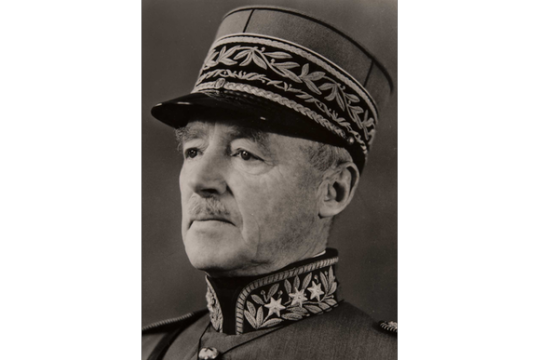
アンリ・ギザン(Henri Guisan、1874年10月21日 - 1960年4月8日)は、スイスの軍人。第二次世界大戦下の非常事態下において軍の最高司令官となり、同時に事実上のスイスの最高指導者となった
0 notes
Text
Events (after 1900)
1908 – Ajinomoto is founded. Kikunae Ikeda of the Tokyo Imperial University discovers that a key ingredient in kombu soup stock is monosodium glutamate (MSG), and patents a process for manufacturing it.
1909 – Louis Blériot makes the first flight across the English Channel in a heavier-than-air machine from Calais to Dover, England, United Kingdom in 37 minutes.
1915 – RFC Captain Lanoe Hawker becomes the first British pursuit aviator to earn the Victoria Cross.
1917 – Sir Robert Borden introduces the first income tax in Canada as a "temporary" measure (lowest bracket is 4% and highest is 25%).
1925 – Telegraph Agency of the Soviet Union (TASS) is established.
1934 – The Nazis assassinate Austrian Chancellor Engelbert Dollfuss in a failed coup attempt.
1940 – General Henri Guisan orders the Swiss Army to resist German invasion and makes surrender illegal.
1942 – The Norwegian Manifesto calls for nonviolent resistance to the German occupation.
1943 – World War II: Benito Mussolini is forced out of office by the King (encouraged by the Grand Council of Fascism) and is replaced by Pietro Badoglio.
1944 – World War II: Operation Spring is one of the bloodiest days for the First Canadian Army during the war.
1946 – The Crossroads Baker device is the first underwater nuclear weapon test.
1956 – Forty-five miles south of Nantucket Island, the Italian ocean liner SS Andrea Doria collides with the MS Stockholm in heavy fog and sinks the next day, killing 51.
1957 – The Tunisian King Muhammad VIII al-Amin is replaced by President Habib Bourguiba.
1958 – The African Regroupment Party holds its first congress in Cotonou.
1961 – Cold War: In a speech John F. Kennedy emphasizes that any attack on Berlin is an attack on NATO.
1965 – Bob Dylan goes electric at the Newport Folk Festival, signaling a major change in folk and rock music.
1969 – Vietnam War: U.S. President Richard Nixon declares the Nixon Doctrine, stating that the United States now expects its Asian allies to take care of their own military defense. This is the start of the "Vietnamization" of the war.
1971 – The Sohagpur massacre is perpetrated by the Pakistan Army.
1973 – Soviet Mars 5 space probe is launched.
1976 – Viking program: Viking 1 takes the famous Face on Mars photo.
1978 – Puerto Rican police shoot two nationalists in the Cerro Maravilla murders.
1978 – Birth of Louise Joy Brown, the first human to have been born after conception by in vitro fertilisation, or IVF.
1979 – In accord with the Egypt–Israel peace treaty, Israel begins its withdrawal from the Sinai Peninsula.
1983 – Black July: Thirty-seven Tamil political prisoners at the Welikada high security prison in Colombo are massacred by the fellow Sinhalese prisoners.
1984 – Salyut 7 cosmonaut Svetlana Savitskaya becomes the first woman to perform a space walk.
1993 – Israel launches a massive attack against Lebanon in what the Israelis call Operation Accountability, and the Lebanese call the Seven-Day War.
1993 – The Saint James Church massacre occurs in Kenilworth, Cape Town, South Africa.
1994 – Israel and Jordan sign the Washington Declaration, that formally ends the state of war that had existed between the nations since 1948.
1995 – A gas bottle explodes in Saint Michel station of line B of the RER (Paris regional train network). Eight are killed and 80 wounded.
1996 – In a military coup in Burundi, Pierre Buyoya deposes Sylvestre Ntibantunganya.
2000 – Concorde Air France Flight 4590 crashes outside of Paris shortly after taking off at Charles de Gaulle Airport, killing 113 people.
2007 – Pratibha Patil is sworn in as India's first female president.
2010 – WikiLeaks publishes classified documents about the War in Afghanistan, one of the largest leaks in U.S. military history.
2018 – As-Suwayda attacks: Coordinated attacks occur in Syria.
2019 – National extreme heat records set this day in the UK, Belgium, The Netherlands and Germany during the July 2019 European heat wave.
0 notes
Photo

https://www.instagram.com/p/BoBwDH5AAK6/?taken-by=helvetic.historian
6 notes
·
View notes
Text
Swiss Neutrality (gone too far ?!?!?!)
Switzerland has continued to stay neutral in the war, however radicals in the country took it a step further and adopted the policy of Ultra-Neutrality. Ultra-Neutrality being a policy that enforces foreign entities to adopt a neutral stance and use non-violent force to prevent conflict. The ethnically German group, Schweizer Friedenswächter (SFS), or the Swiss Peace Guard, has publicly stated that they will not tolerate another World War after witnessing the previous one’s destruction for their ethnically German brothers. After receiving rumors of the Führer’s plan to invade Britain, the group organised its first act of retaliation. Thirty members of the SFS travelled across to Nazi Germany and infiltrated the Luftwaffe’s bases at Diepholz, Bӧblingen, Faßberg, Jever, Lippstadt and Nordholz. Security lapse or pure genius, the SFS managed to dismantle German planes that were going to be used for the invasion in one night and grenaded the airstrip making it temporarily unusable. While each of the group’s thirty members have surrendered, the Luftwaffe’s invasion cannot take place for the next two weeks. The SFS has also released in a statement that any British troops or bases set up in Switzerland will be dealt with in a similar manner. General of the Swiss Army, Henri Guisan has reiterated the nation’s stance of neutrality in the war and claims no involvement in the actions of the SFS.
0 notes
Photo
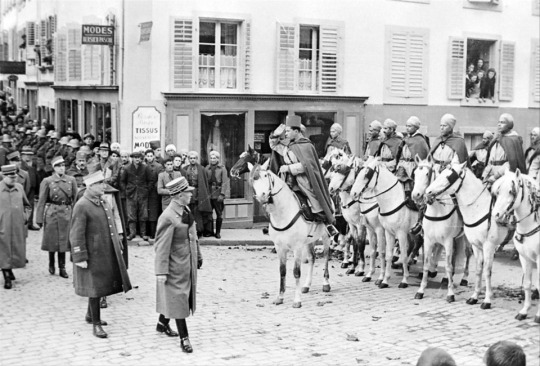
El general suizo Henri Guisan revisando el séptimo regimiento argelino spahis, junio de 1940, Moudon, Suiza
1 note
·
View note
Text
Luxury UK Rolex Replica Watches
Pochi orologi sono iconici come il Rolex Day-Date, l'orologio da polso in oro giallo 18 carati comunemente noto come "President" o "Presidential". Con il suo aspetto audace, il Day-Date ha adornato i polsi di alcuni dei più noti magnati e leader mondiali del 20 ° secolo.
Il Day-Date è stato il primo orologio a Luxury UK Rolex Replica Watches presentare complicazioni di giorno e data: nella parte superiore del quadrante, un datario; e alle tre, un datario, completo del classico Rolex ciclope. È chiaro dalla prima impressione che il Rolex Day-Date è speciale: è un orologio che rappresenta l'apice dell'eccellenza orologiera. Allora come è nato il soprannome di "Presidente"?
Bene, non sorprende che un orologio che dice chiaramente "guarda mamma, l'ho fatto" ha abbellito i polsi di diversi presidenti degli Stati Uniti da quando è stato lanciato ufficialmente nel 1956. Non sorprende inoltre che Rolex non abbia mai avuto paura di promuovere la sua associazione figure influenti.
Sebbene non sia stato il primo presidente a possedere un Day-Date, Lyndon B. Johnson è stato senza dubbio il primo leader mondiale a contribuire alla sua reputazione di orologio di presidenti e leader mondiali.
LBJ era un vero appassionato di orologi. Notoriamente indossava un Vulcain Cricket, scrivendo al presidente 18k Rolex Day-Date 40 'President' watches della compagnia che si sentiva "meno vestito senza di esso". Ma il presidente Johnson è più strettamente associato al suo Rolex Day-Date, un orologio che indossava spesso durante la sua presidenza. Era anche noto per regalare orologi Rolex come regali. Verso la fine della sua vita, dopo aver affrontato problemi di salute quasi costanti per diversi decenni, LBJ ha regalato un Rolex in oro 18k al suo cardiologo.
È interessante notare che il presidente più strettamente associato al Rolex Day-Date, il presidente Dwight D. Eisenhower, non ne ha mai posseduto uno.
Nel 1951, Rolex ha prodotto il suo 150.000 ° cronometro certificato. Dopo aver consegnato il suo 50.000 ° orologio al generale Henri Guisan e il suo 100.000 ° orologio a Winston Churchill, Rolex ha contattato il generale Eisenhower offrendogli la 150.000 ° creazione dell'azienda: un Rolex Datejust in oro 18k. Sebbene il Rolex di Eisenhower non fosse un Day-Date, condivideva diverse caratteristiche con il moderno "Presidente" Rolex. La sua cassa era in oro giallo, meglio associata al Day-Date che al Datejust, ed era abbinata a un braccialetto Jubilee in oro giallo 18 carati.
Non tutti i presidenti erano ansiosi di indossare pubblicamente il Rolex Day-Date. Nel maggio del 1962, John F. Kennedy ricevette un Day-Date come regalo di compleanno da Marilyn Monroe. Sul retro dell'orologio c'era un messaggio: "Con amore come sempre". Volendo evitare uno scandalo, la risposta di Kennedy all'aiutante Kenneth O'Donnell dopo aver ricevuto l'orologio è stata breve e dolce: "sbarazzatene".
0 notes
Text
El escándalo de espionaje de Swiss Crypto AG sacude la reputación de neutralidad
Nueva Noticia publicada en https://noticiasq.com/el-escandalo-de-espionaje-de-swiss-crypto-ag-sacude-la-reputacion-de-neutralidad/
El escándalo de espionaje de Swiss Crypto AG sacude la reputación de neutralidad
Es difícil exagerar cuánto ha sacudido Suiza el escándalo de Crypto AG.
Durante décadas, los servicios secretos estadounidenses y alemanes han utilizado los dispositivos de codificación de esta compañía suiza para espiar a otros países, y las revelaciones de esta semana han provocado indignación.
Desde la Guerra Fría hasta la década de 2000, Crypto AG vendió los dispositivos a más de 120 gobiernos de todo el mundo. Las máquinas estaban encriptadas, pero esta semana se supo que la CIA y el BND alemán habían manipulado los dispositivos para que pudieran descifrar los códigos e interceptar miles de mensajes.
Los rumores habían circulado en el pasado, pero ahora todos lo saben.
Porque la neutralidad suiza importa
Hay solo unos pocos países en el planeta que han elegido la neutralidad; Austria es uno, Suecia otro. Pero ningún país ha creado un símbolo de estatus para la neutralidad como el suizo.
Ahora que el escándalo de Crypto AG ha surgido en todos sus detalles amenazantes, no hay ningún periódico o estación en el país que no cuestione la neutralidad de Suiza.
«Está destrozado», es una frase común.
Un juez federal ya está en el caso y los políticos de todo el espectro están pidiendo una comisión de investigación parlamentaria.
Este es un país cuya neutralidad le ha permitido representar los intereses de Estados Unidos en Irán durante 30 años y los intereses de Teherán en Washington. Suiza ha negociado mucho detrás de escena con Estados Unidos para permitir que las entregas de ayuda humanitaria a Irán alivien los peores efectos de las sanciones.
También es un país que vendió máquinas de encriptación defectuosas a Irán, con la etiqueta Made in Switzerland, para que Washington pudiera espiar.
La neutralidad suiza se venera como si estuviera en el ADN del país, parte de una identidad nacional única, y no en la política pragmática de un pequeño país que contrató mercenarios en el resto de Europa hasta que sus líderes decidieron no luchar en absoluto. Estar más seguro.
«Sobrevivimos a dos guerras mundiales», es una frase que a menudo escuchas en Suiza. Puede ser irritante para los ciudadanos de otros países europeos que han sobrevivido incluso a esas guerras, de una manera bastante insoportable.
Pero es cierto, la neutralidad de Suiza lo mantuvo alejado de esas guerras y en 1945 surgió la economía e infraestructura de Suiza, similar a la de los fenicios y sin daños, mientras que sus vecinos barrieron las cenizas y los escombros.
Cómo se hicieron útiles los suizos
Sin embargo, la neutralidad no es un campo de fuerza que mantiene alejados a los enemigos. No es una palabra mágica que puedas cantar y los malos te dejarán en paz.
Durante la Segunda Guerra Mundial, Suiza hizo todo tipo de cosas para asegurarse de que sus vecinos se mantuvieran alejados.
La movilización masiva, que envió a todos los hombres entre las edades de 18 y 60 años para defender las fronteras, cavó túneles y pasos alpinos, fue una cosa: y hasta hace poco ocupaba el primer lugar en los libros de historia suizos.
Pero había algo más, igual de importante: Suiza se ha hecho útil, desde todos los lados.
La Alemania nazi encontró un lugar seguro para el arte saqueado y el oro en los bancos suizos. Envió trenes llenos de armas a través de Suiza para apoyar al dictador italiano Benito Mussolini.
Al mismo tiempo, el jefe de las fuerzas armadas suizas, el general Henri Guisan, mantenía conversaciones secretas con los franceses para luchar juntos si ambos países habían sido invadidos. Hay una carretera que lleva el nombre de Guisan en cada ciudad suiza.
Mientras tanto, la agencia de recolección de información de los Estados Unidos, la Oficina de Servicios Estratégicos, ha enviado a Allen Dulles a Europa.
Dulles abrió su oficina en la capital suiza, Berna, y se quedó allí por el resto de la guerra, espiando a los alemanes. Más tarde se convirtió en jefe de la CIA.
Quien sabia que?
En la década de 1990, los suizos dedicaron mucha investigación a la Segunda Guerra Mundial.
Los libros de historia han sido reescritos para incluir la vergonzosa política de empujar a los refugiados judíos de regreso a las fronteras. Se establecieron comisiones de investigación, memoriales y un ministro del gobierno suizo, Kaspar Villiger, se disculpó formalmente.
Es el mismo Kaspar Villiger que ahora está acusado, mientras se desempeñaba como ministro de defensa en la década de 1990, de saber que la CIA controlaba Crypto AG y vendía máquinas criptográficas defectuosas en todo el mundo para espiar a gobiernos extranjeros.
Sr. Villiger, debe enfatizarse, lo niega. Pero muchas preguntas sobre Crypto se plantearon en Suiza en la década de 1990, por lo que es curioso que el ministro de Defensa no las haya escuchado o seguido.
Cuando se le preguntó sobre Villiger en la televisión suiza, la presidenta federal rotativa Simonetta Sommaruga dijo que las especulaciones no tienen sentido. «Lo discutiremos cuando tengamos los hechos», dijo.
¿Puede Suiza tener ambos?
¿Por qué pueden estos dos conceptos, neutralidad y cooperación, existir juntos?
Quizás de la misma manera que Suiza no lucha con orgullo las guerras, sino que vende muchas armas.
O la forma en que sus banqueros dijeron «el dinero no huele». En otras palabras, estaban felices de lidiar con cualquier conflicto sangriento, dictador brutal, …
Puedes leer el articulo completo (en ingles) Aquí
0 notes
Text
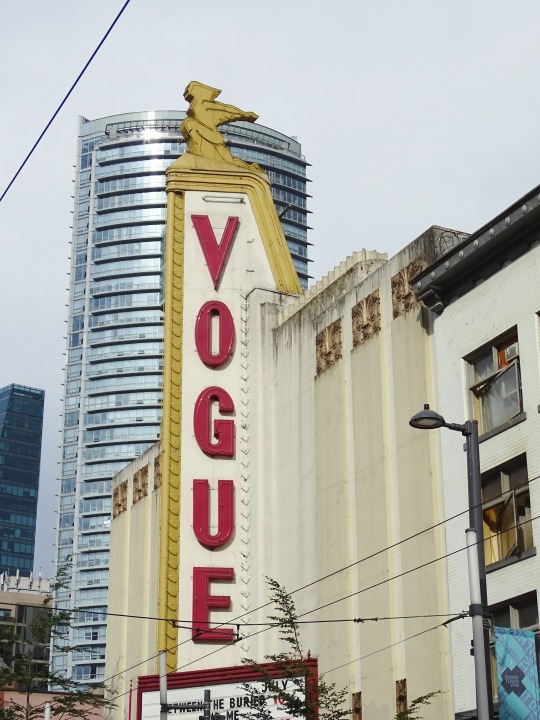

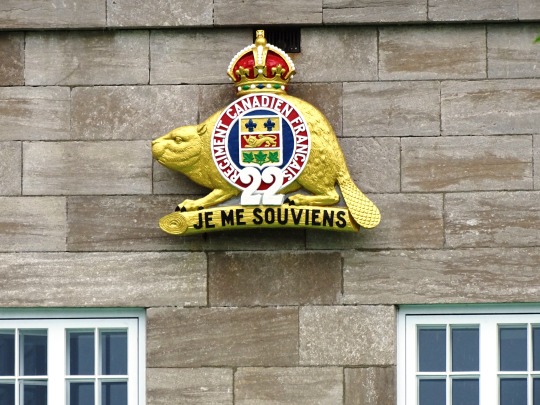
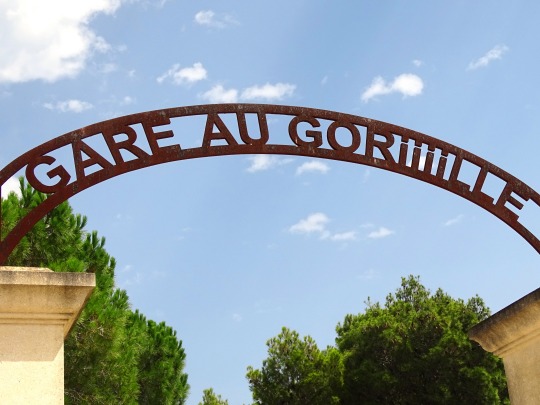





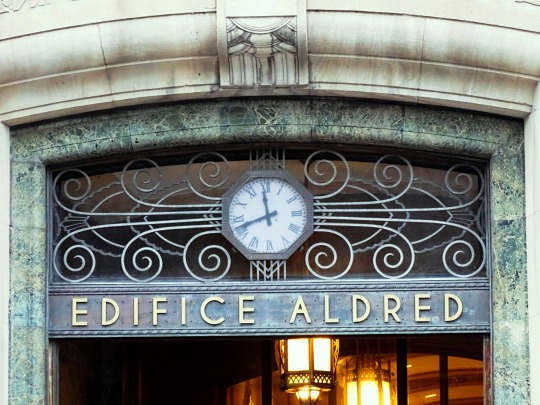




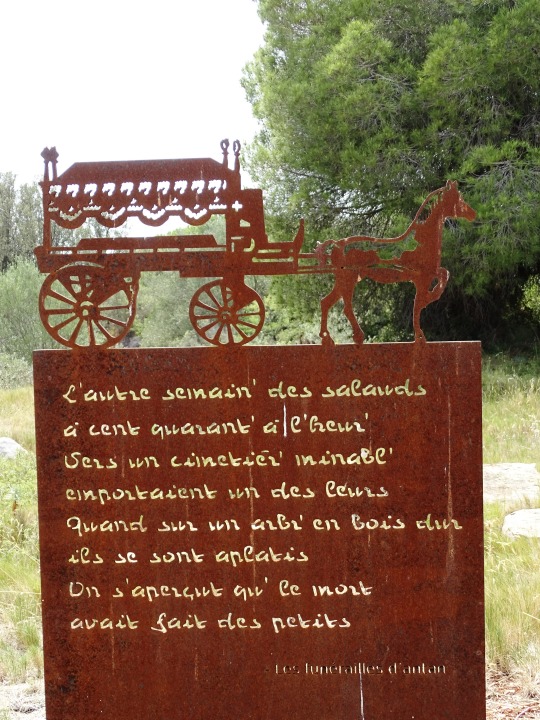
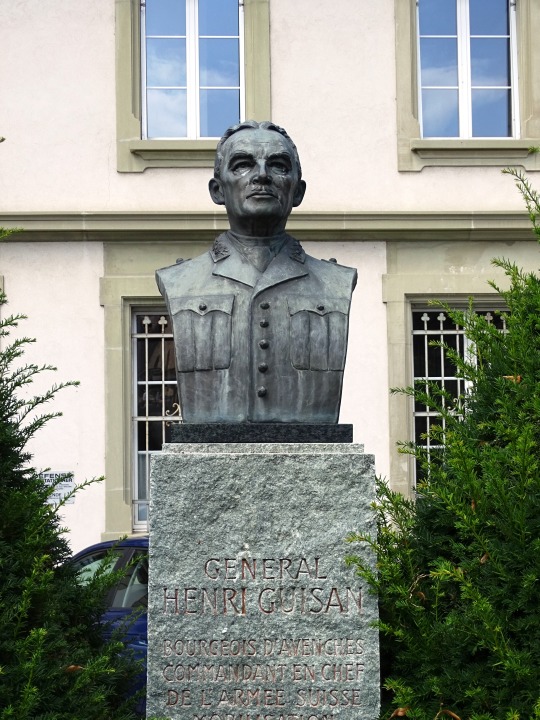




French Language Day
French Language Day is on March 20 and we’re more than excited to celebrate with some French culture, language, and history as we ask…parlez vous Francais? Even if you don’t speak the language there’s a lot of aspects of French culture to learn about. This occasion is meant to respect multilingualism and cultural diversity. When most people think of French they think of France, but it’s actually Africa that has the most French speakers. There are an estimated 120 million Africans from 29 countries that speak the language alongside their indigenous languages.
History of French Language Day
The French language comes from Vulgar Latin of the Roman Empire. France was known as Gaul during that time and they were conquered by the Romans in the first and second century BC. At that time, they spoke Gaulish which is a Celtic language, but that was replaced by Latin from the Romans. In the fifth century, Germanic tribes invaded Gaul and they were Romanized as well. As a result of these outside influences, modern French owes its origins to Celtic, Germanic, but most of all to Latin.
Old French was spoken by the ninth century to the thirteenth and it was different from Latin. The Oaths of Strasbourg is the oldest known document that uses Old French and it had varying dialects including Francien, a dialect that was used near Paris. In the fourteenth and sixteenth centuries, Middle French was used with expressions from Latin, Greek, and Italy. A group of French poets known as the Pléiade, inspired the French to strengthen their language and literature.
The seventeenth-century marked the modern period of French and in 1635, Cardinal Richelieu founded the French Academy. The purpose of this was to maintain the sanctity of the language and its literature. The language evolved over time with artistic movements like romanticism and realism, but in large, it has stayed true to this period.
In 2010, the UN’s Department of Public Information made French Language Day official to celebrate multilingualism and cultural diversity. The day is also used to promote the equal use of all six official languages throughout the UN which are Arabic, Chinese, English, French, Russian, and Spanish. March 20 is also recognized as the International Day of La Francophonie that celebrates the anniversary of the Agency for Cultural and Technical Cooperation (ACCT) that began March 20, 1970.
French Language Day timeline
2010 Language Days
French Language Day is made official by the UN to celebrate multilingualism.
1635 French Lit
Cardinal Richelieu founded the French Academy to maintain the sanctity of the language in literature.
842 The French of Old
The Oaths of Strasbourg is the oldest known document that uses Old French.
5th Century AD Epidemics
Gaul is conquered by the Roman Empire and the language Gaulish gives way to Latin.
French Language Day FAQs
What is World Language Day?
World Languages Day is a worldwide career expo that connects over 1,000 high school and college students to businesses and professions that value global skills.
Why do we celebrate Francophonie
International Day of La Francophonie celebrates the anniversary of the Agency for Cultural and Technical Cooperation that began March 20, 1970.
Do people in Canada speak French?
French is the mother tongue of an estimated 7.2 million Canadians, which is 20% of the population.
French Language Day Activities
Learn French
Have French cuisine
Join the discussion
French is known as one of the most romantic languages for a reason. Find out by trying it out for yourself! There are a plethora of French language learning guides online to practice with. You can make this a group activity and challenge a friend to try learning it as well and see how well you do in conversation with one another.
France is also known for its exquisite cuisine. Try your hand at cooking (and saying) some of the meals that they’re most known for. There’s soupe à l'oignon, cassoulet, chocolate soufflé, and more. If cooking isn’t your thing, you can go to an authentic French restaurant and share your experience with pictures on social media to spread the word.
The United Nations organizes dialogues all over the world as part of their UN75 initiative to hear from diverse groups about their hopes, fears, and experiences. Join the discussion by providing your own opinions, or listen to other voices to get a better grasp of global perspectives.
Five Facts About French Language Day
Recognized language
Social media ranking
Simplicity
Fast growth
Wide-spread
French was one of the first two working languages used by the United Nations.
French is the sixth most common language on the internet.
French is one of the easiest languages to learn for English speakers.
French isn't the most commonly spoken language, but it's a fast-growing language.
French is spoken on five different continents.
Why We Love French Language Day
It celebrates culture
Multilingualism is important
Know your French history
There’s no denying that the French language is a beautiful one. A long list of talented poets, writers, and artists are French and their works have lasted the test of time. By honoring the French Language Day, you also show respect to the hard-working artists that have put so much beauty out into the world.
French Language Day is a show of support for multilingualism and accepting diversity. The day reminds us to respect other communities and cultures and to act in cooperation with one another. Language can be a bridge between worlds.
Oftentimes, there are incorrect beliefs about a country, but you can never know the full story unless you investigate. France has an important history that has affected and has been affected by many other countries. We owe it to ourselves to understand these truths so that collectively we have a broader and more cultured mindset.
Source
#Aire de Fitou Est#Camaret-sur-Aigues#Henri Guisan#Avenches#France#Suisse#Schweiz#Switzerland#Waadt#Vaud#travel#vacation#summer 2021#original photography#cityscape#amphitheater#ruins#tourist attraction#landmark#architecture#Invitation to Travel by Maurice Savoie and Louis Barrette#Quebec City#Québec#Royal 22e Régiment#Citadelle of Quebec#FrenchLanguageDay#20 March#French Language Day#Vancouver#Yukon
0 notes
Text
REALPOLITIK: A Fortress, Disguised as a Country - By Eric Margolis
REALPOLITIK: A Fortress, Disguised as a Country – By Eric Margolis
Source – ericmargolis.com
– “…In the late 1930’s, as one European nation after another bowed down to Hitler’s demands, the Swiss military and its popular rifle clubs, banded together and decided their nation would not bend the knee as the Czechs, Dutch, Norwegians, Belgians, and then the French had done…Orders went out from Gen. Henri Guisan: ‘leave your families behind in the lowlands. Man our…
View On WordPress
0 notes
Text
Events 9.1
1145 – The main altar of Lund Cathedral, at the time seat of the archiepiscopal see of all the Nordic countries, is consecrated.
1173 – The widow Stamira sacrifices herself in order to raise the siege of Ancona by the forces of Emperor Frederick Barbarossa.
1355 – King Tvrtko I of Bosnia writes In castro nostro Vizoka vocatum from the Old town of Visoki.
1420 – A 9.4 MS-strong earthquake shakes Chile's Atacama Region causing tsunamis in Chile as well as Hawaii and Japan.
1449 – Tumu Crisis: The Mongols capture the Emperor of China.
1529 – The Spanish fort of Sancti Spiritu, the first one built in modern Argentina, is destroyed by natives.
1532 – Lady Anne Boleyn is made Marquess of Pembroke by her fiancé, King Henry VIII of England.
1604 – Adi Granth, now known as Guru Granth Sahib, the holy scripture of Sikhs, was first installed at Harmandir Sahib.
1644 – Battle of Tippermuir: James Graham, 1st Marquess of Montrose defeats the Earl of Wemyss's Covenanters, reviving the Royalist cause.
1715 – At the age of five, Louis XV becomes king of France in succession to his great-grandfather, King Louis XIV.
1763 – Catherine II of Russia endorses Ivan Betskoy's plans for a Foundling Home in Moscow.
1772 – The Mission San Luis Obispo de Tolosa is founded in San Luis Obispo, California.
1774 – Massachusetts Bay colonists rise up in the bloodless Powder Alarm.
1804 – Juno, one of the largest asteroids in the Main Belt, is discovered by the German astronomer Karl Ludwig Harding.
1831 – The Order of St. Gregory the Great is established by Pope Gregory XVI of the Vatican State to recognize high support for the Vatican or for the Pope, by a man or a woman, and not necessarily a Roman Catholic.
1836 – Narcissa Whitman, one of the first English-speaking white women to settle west of the Rocky Mountains, arrives at Walla Walla, Washington.
1838 – Saint Andrew's Scots School, the oldest school of British origin in South America, is established.
1862 – American Civil War: Battle of Chantilly: Confederate Army troops defeat a group of retreating Union Army troops in Chantilly, Virginia.
1864 – American Civil War: The Confederate Army General John Bell Hood orders the evacuation of Atlanta, ending a four-month siege by General William Tecumseh Sherman.
1870 – Franco-Prussian War: The Battle of Sedan is fought, resulting in a decisive Prussian victory.
1873 – Cetshwayo ascends to the throne as king of the Zulu nation following the death of his father Mpande.
1878 – Emma Nutt becomes the world's first female telephone operator when she is recruited by Alexander Graham Bell to the Boston Telephone Dispatch Company.
1880 – The army of Mohammad Ayub Khan is routed by the British at the Battle of Kandahar, ending the Second Anglo-Afghan War.
1894 – Over 400 people die in the Great Hinckley Fire, a forest fire in Hinckley, Minnesota.
1897 – The Tremont Street Subway in Boston opens, becoming the first underground rapid transit system in North America.
1905 – Alberta and Saskatchewan join the Canadian confederation.
1906 – The International Federation of Intellectual Property Attorneys is established.
1911 – The armored cruiser Georgios Averof is commissioned into the Greek Navy. It now serves as a museum ship.
1914 – St. Petersburg, Russia, changes its name to Petrograd.
1914 – The last known passenger pigeon, a female named Martha, dies in captivity in the Cincinnati Zoo.
1920 – The Fountain of Time opens as a tribute to the 100 years of peace between the United States and Great Britain following the Treaty of Ghent.
1923 – The Great Kantō earthquake devastates Tokyo and Yokohama, killing about 105,000 people.
1928 – Ahmet Zogu declares Albania to be a monarchy and proclaims himself king.
1934 – The first Metro-Goldwyn-Mayer animated cartoon, The Discontented Canary, is released to movie theatres.
1939 – World War II: Nazi Germany and Slovakia invade Poland, beginning the European phase of World War II.
1939 – General George C. Marshall becomes Chief of Staff of the United States Army.
1939 – The Wound Badge for Wehrmacht, SS, Kriegsmarine, and Luftwaffe soldiers is instituted. The final version of the Iron Cross is also instituted on this date.
1939 – Switzerland mobilizes its forces and the Swiss Parliament elects Henri Guisan to head the Swiss Armed Forces (an event that can happen only during war or mobilization).
1939 – Adolf Hitler signs an order to begin the systematic euthanasia of mentally ill and disabled people.
1941 – The Holocaust: The Nazis execute 2,500 Jews by shooting in Ostroh, Ukraine.
1951 – The United States, Australia and New Zealand sign a mutual defense pact, called the ANZUS Treaty.
1952 – The Old Man and the Sea, the Pulitzer Prize-winning novel by Ernest Hemingway, is first published.
1958 – Iceland expands its fishing zone, putting it into conflict with the United Kingdom, beginning the Cod Wars.
1961 – The Eritrean War of Independence officially begins with the shooting of Ethiopian police by Hamid Idris Awate.
1961 – The first conference of the Non-Aligned Countries is held in Belgrade, Yugoslavia.
1967 – The Khmer–Chinese Friendship Association is banned in Cambodia.
1967 – Six-Day War: The Khartoum Resolution is issued at the Arab Summit, and eight countries adopt the "three 'no's against Israel".
1969 – A coup in Libya brings Muammar Gaddafi to power.
1969 – Trần Thiện Khiêm becomes Prime Minister of South Vietnam under President Nguyễn Văn Thiệu.
1970 – Palestinian guerrillas attack the motorcade of King Hussein of Jordan in a failed assassination attempt.
1972 – In Reykjavík, Iceland, American Bobby Fischer beats Russian Boris Spassky to become the world chess champion.
1974 – The SR-71 Blackbird sets (and holds) the record for flying from New York to London in the time of one hour, 54 minutes and 56.4 seconds at a speed of 1,435.587 miles per hour (2,310.353 km/h).
1979 – The American space probe Pioneer 11 becomes the first spacecraft to visit Saturn when it passes the planet at a distance of 21,000 kilometres (13,000 mi).
1980 – Major General Chun Doo-hwan becomes President of South Korea, following the resignation of Choi Kyu-hah.
1981 – A coup d'état in the Central African Republic overthrows President David Dacko.
1982 – The United States Air Force Space Command is founded.
1983 – Cold War: Korean Air Lines Flight 007 is shot down by a Soviet Union jet fighter when the commercial aircraft enters Soviet airspace, killing all 269 on board, including Congressman Lawrence McDonald.
1985 – A joint American–French expedition locates the wreckage of the RMS Titanic.
1991 – Uzbekistan declares independence from the Soviet Union.
2004 – The Beslan school siege begins when armed terrorists take schoolchildren and school staff hostage in North Ossetia, Russia; by the end of the siege, three days later, more than 385 people are dead (including hostages, other civilians, security personnel and terrorists).
2 notes
·
View notes

